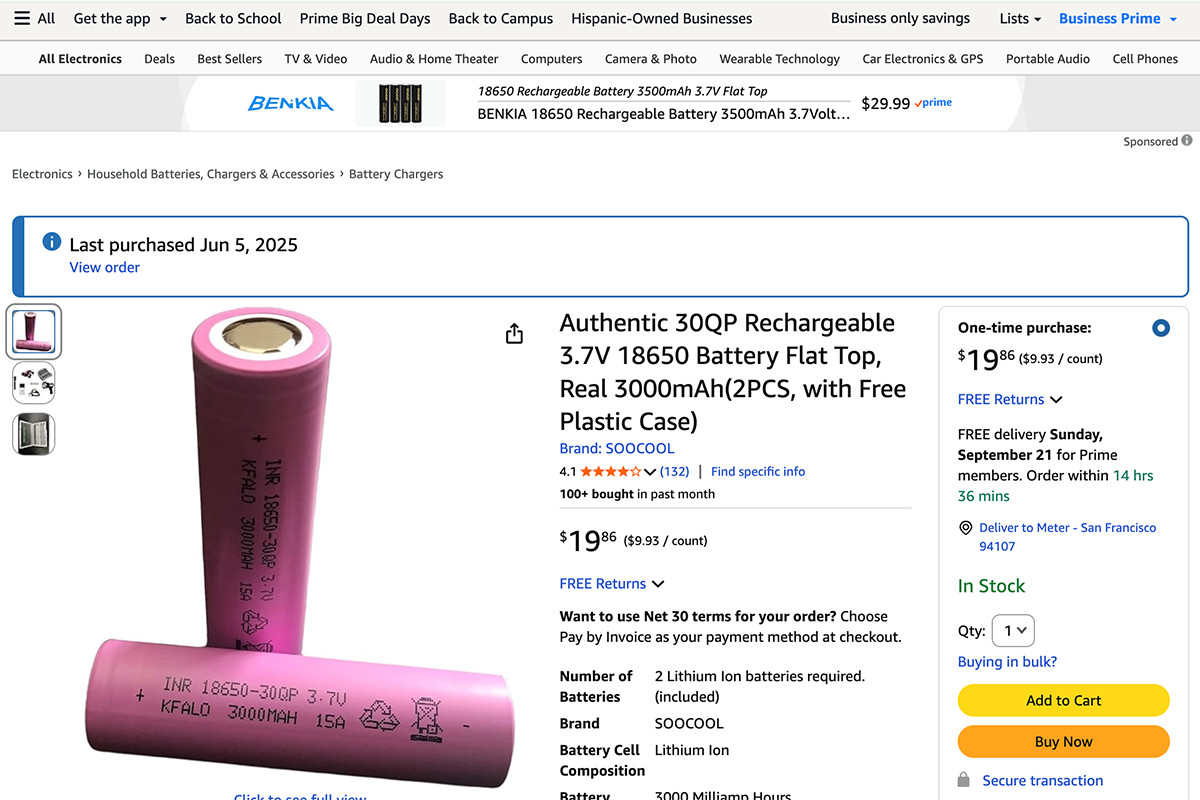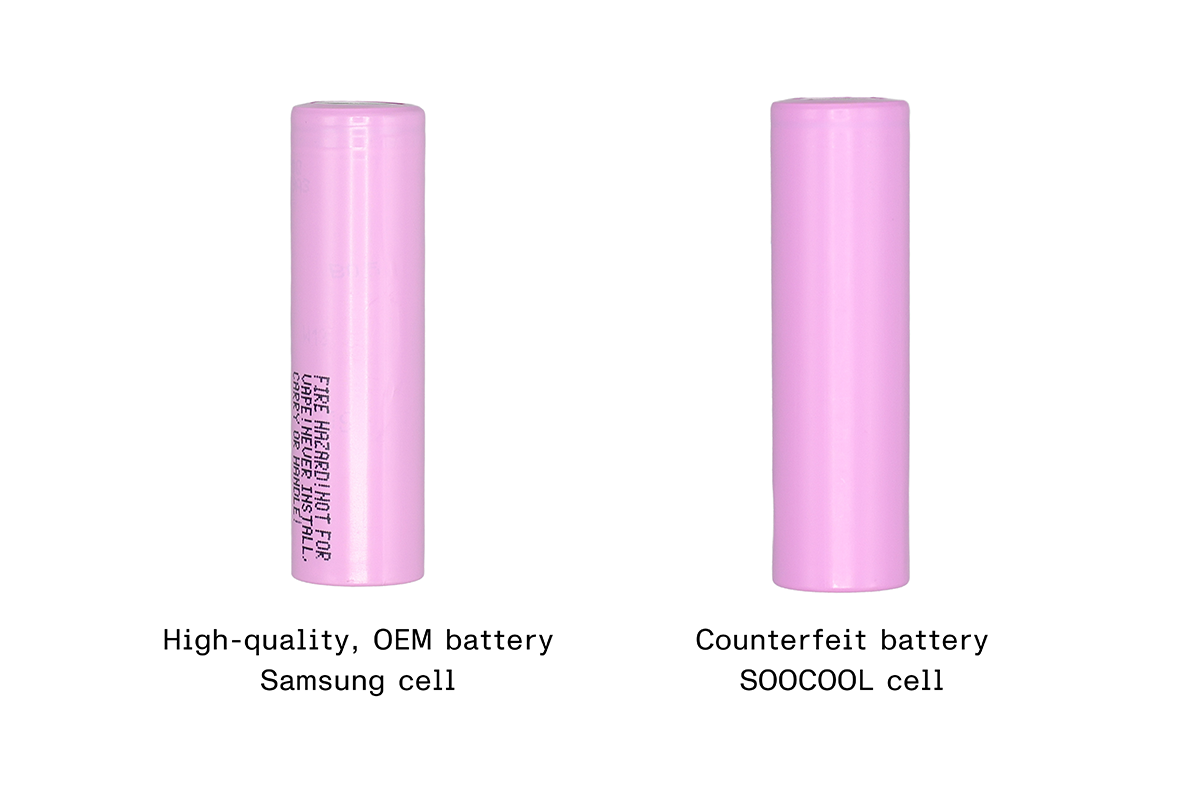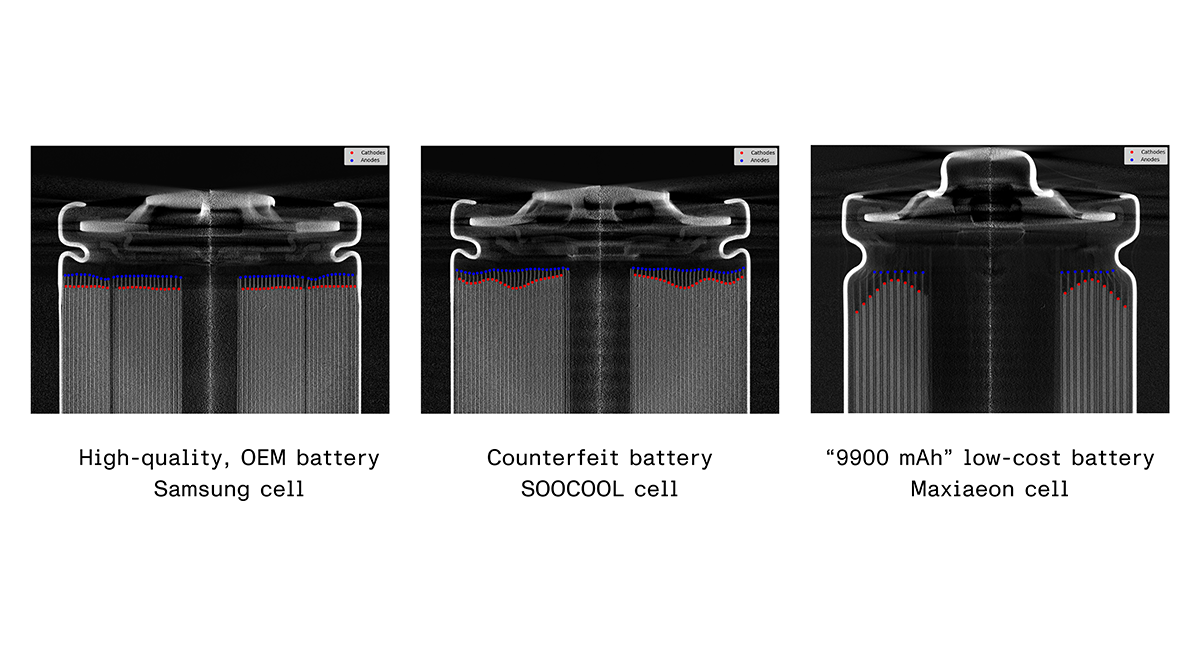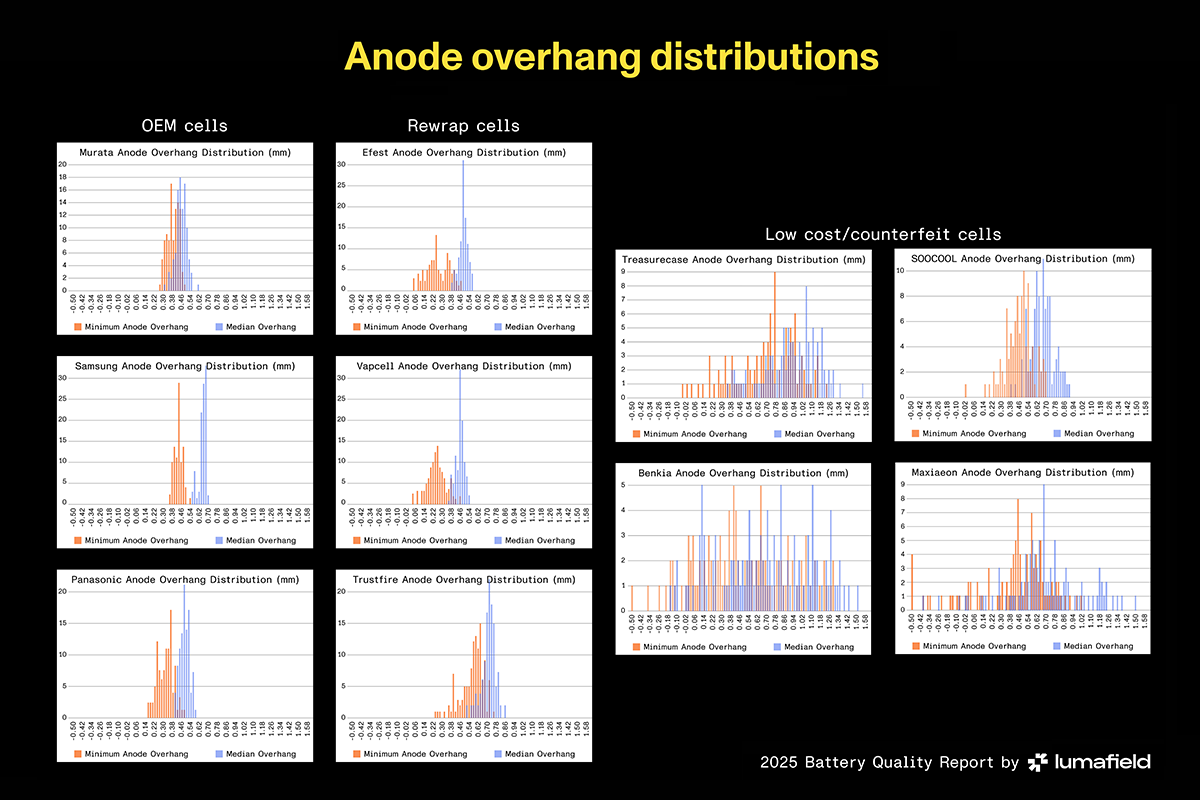18650 lithium-ion batteries are among the most common in the world. Their wound design and standard form factor makes them fast and economical to produce at scale, with around 5 billion being manufactured every year. But the popularity and standardization of these cells creates an opportunity for bad actors to capitalize on the quality efforts of reputable manufacturers.
Counterfeit 18650 cells move through fast-moving marketplaces where listings turn over quickly and a convincing external wrap substitutes for provenance. 18650s generally all look the same on the outside, given their defined can size of 18 mm by 65 mm. The truth, however, lies within, where the jelly roll reveals dangerous shortcuts.
Impersonation
The clearest counterfeiting comes from direct impersonation. Some 18650 products copy a specific, reputable model in name, appearance, and positioning. In our Battery Quality Report, we examined cells from Amazon vendor SOOCOOL that closely mimicked the appearance of Samsung’s 30Q 18650 product. The cells were wrapped in a strikingly similar pink color, and featured similar printed warnings advising against use in vaping devices. The listing title “Authentic 30QP Rechargeable 3.7 V 18650 Battery Flat Top, Real 3000mAh(2PCS, with Free Plastic Case),” also clearly leaned into the Samsung 30Q identity, and they were priced at a premium, costing more than the actual Samsung batteries but available on the more convenient platform of Amazon. This particular listing has since been removed, but countless others can still be found.

Initially, the batteries also seem to perform similarly to the real Samsungs, their measured capacities landing in the same neighborhoods. However, our industrial X-ray CT scans told a different story. Anode overhang, which should sit near 0.5 mm to maintain a safety margin as the cell ages, came up short in several cells, with one sample even showing negative anode overhang. Insufficient anode overhang is a defect that can meaningfully contribute to uneven lithium plating, which in turn can result in performance problems and even internal shorts down the line.
The edge alignment of the SOOCOOL cells also deviated wildly. Anode and cathode layers should be as straight as possible in a wound lithium-ion battery, and the wavy patterns of the SOOCOOL batteries indicate poor manufacturing process controls. The quality concerns that the CT scans surface confirm these cells are counterfeits.

Counterfeit Technique 2: Misrepresentation
Low-cost cells that print impossible specifications engage in a different kind of misrepresentation. Two brands in the set scanned for the Battery Quality Report, Benkia and Maxiaeon, had “9900 mAh” printed on their wraps, a physically impossible figure for the form factor. The measured capacity for the both brands sat around 1200 mAh, and the scans showed why. Large portions of the interior had little or no active material. These cells do not impersonate a particular brand, but they inflate performance claims beyond plausibility. Packs designed around those claims will deliver less energy and age unpredictably because the interior cannot support the promise on the label.

A Gray Area: Rewrapping
Separate from these two groups are rewrapped batteries. In most cases they begin as legitimate OEM cells that have been relabeled for distribution under a new brand. Many perform as expected because the core cell was designed and built by a competent manufacturer. But risk comes from uncertainty about the exact source. Rewraps can include surplus lots, cells that failed OEM QA, or units that were disassembled from larger salvaged battery packs. The new wrap hides that history, so the question becomes not whether rewraps are inherently poor, but whether any given batch matches the underlying standard. In our scans, several rewraps generally mirrored mainstream OEM geometry, though the anode overhang distributions were not as tight. One of the three rewrap brands we scanned was also markedly worse than the other two, illustrating the variability rewrapping can hide, though even the worst rewrap cells were still much higher quality than the low-cost/counterfeit cells.
Population behavior separates these groups more cleanly than any single measurement. The SOOCOOL set scattered more broadly and stood well apart from genuine Samsung samples, even though some individual cells looked acceptable in isolation. The spec-inflated low-cost brands had the widest distributions, indicating exceptionally poor process controls. Rewraps generally clustered tighter, with outliers that reflected the uncertainty of source rather than a systematic departure from good practice.

Can you trust the batteries you’re buying?
Validating 18650 supply is essential because these cells are then buried into larger electronic assemblies. With numerous potentially problematic cells clustered in hard-to-access areas of devices, failures become hard to identify and address. Unfortunately current oversight of lithium-ion batteries is insufficient, focusing on hazardous material content, shipping standards, and coin-cell child safety. All are important, but battery quality is going largely untraced. The enormous size of the market makes it easy to hide gray-market activity. Questionable vendors can vanish and reappear under new listings when problems arise, as we saw firsthand.
Counterfeits and dubious claims will continue to circulate as long as batteries remain ubiquitous and profitable, and they flourish in the gaps left by limited oversight. That reality makes it all the more important to recognize that every can is not created equal. When billions of cells enter the market each year, some will carry the design discipline of a reputable manufacturer and others the shortcuts of a dishonest one. Understanding the difference is not just about calling out bad actors, but about seeing how trust in the battery supply is built (or eroded) one cell at a time.




